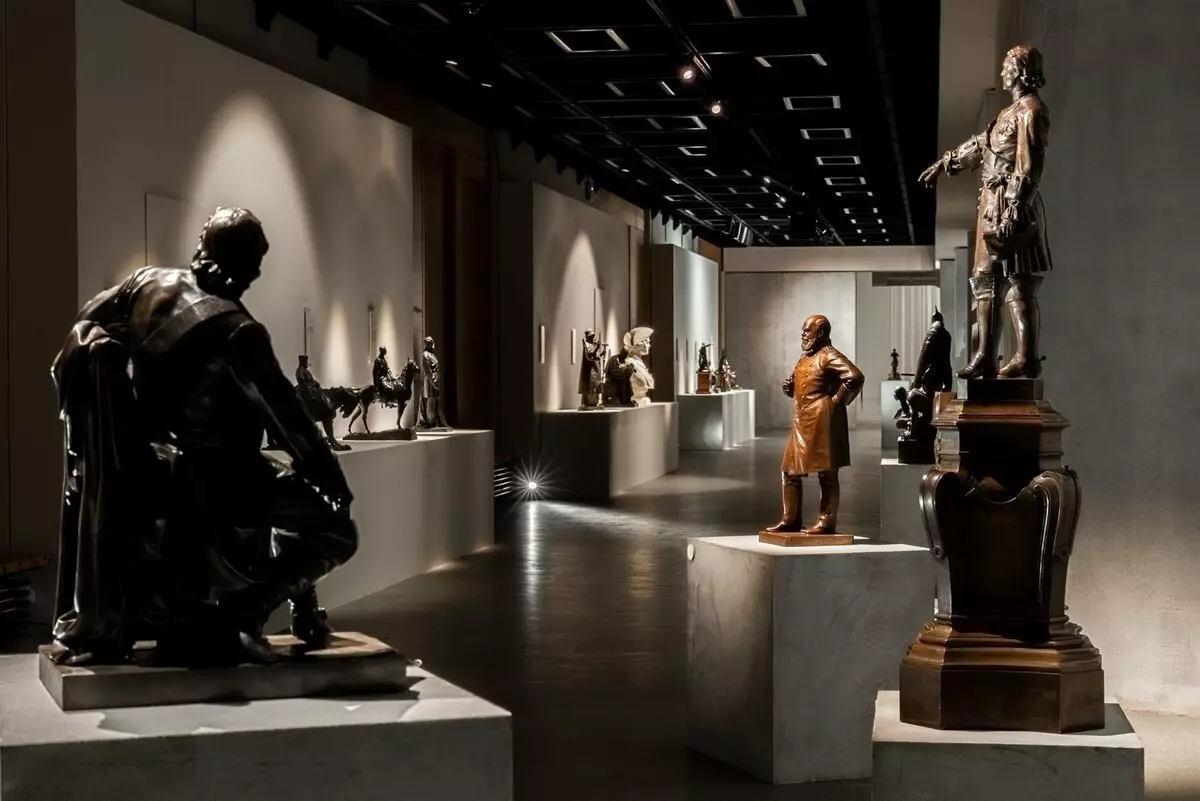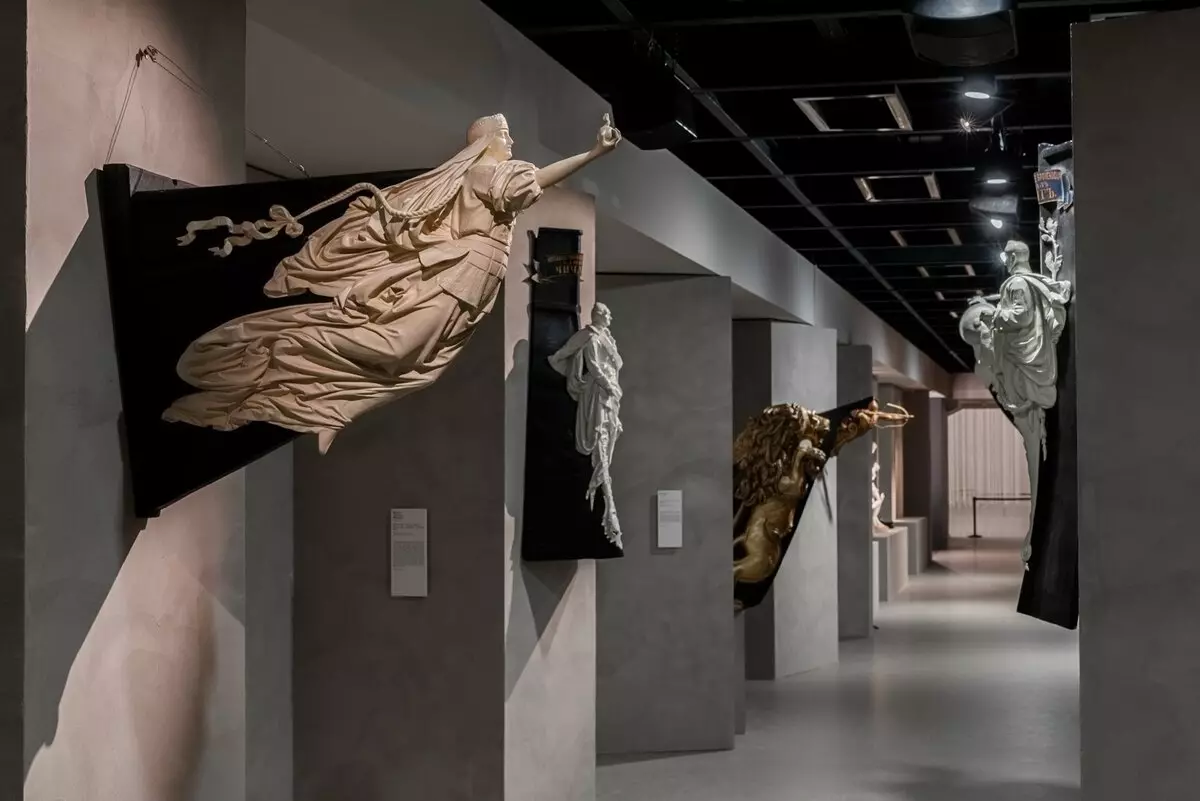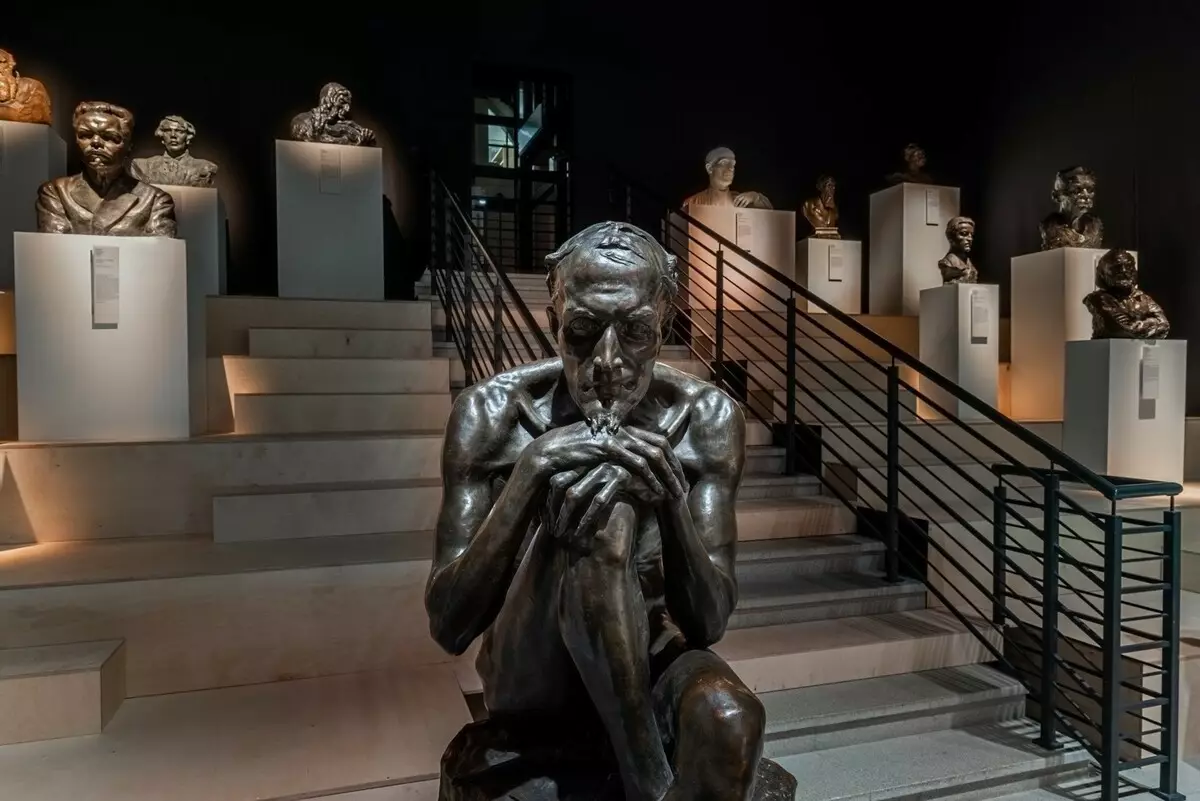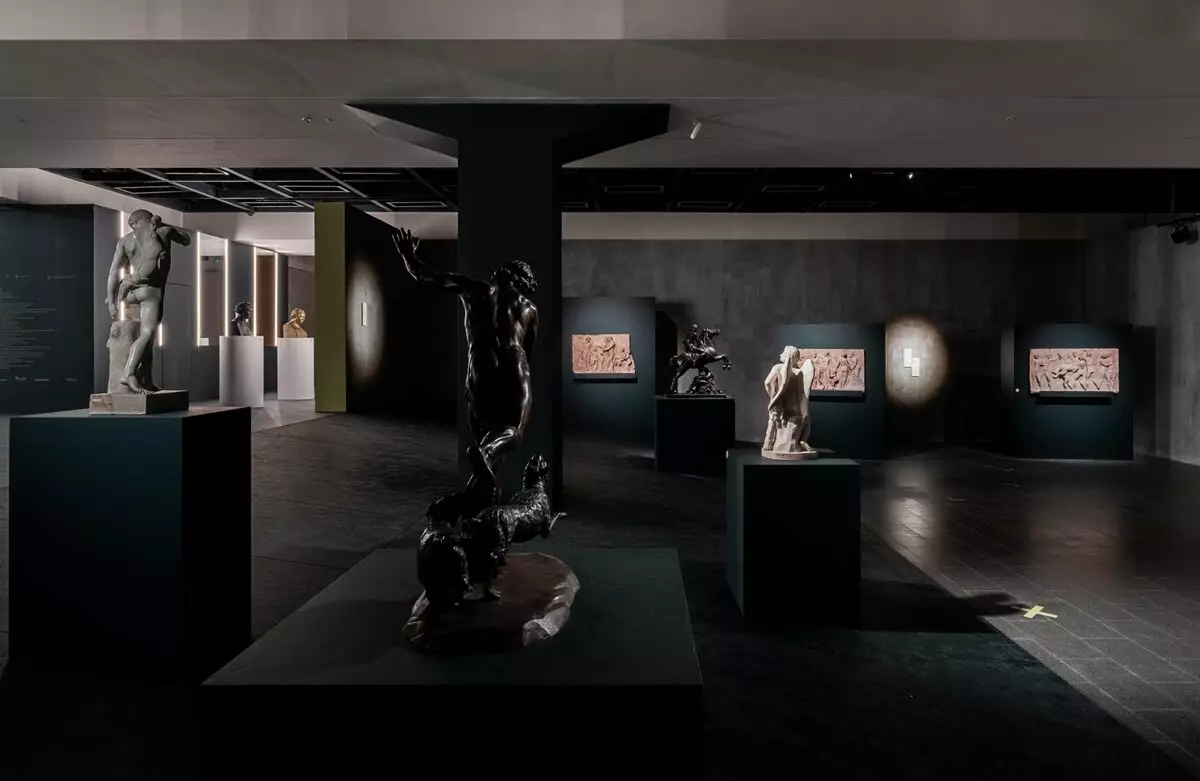The exhibition "(no) mobility" began work in "Manege". This is more than 150 works of Russian sculptors of different years - from the second half of the XVIII century to the beginning of the 20th century.
For more than two years, employees of dozens of Russian museums conducted a large-scale art historical study. They selected rare and particularly significant sculptural works of the XVIII-XX centuries. Then, work began on the exhibition: "Maneja" halls issued as theatrical stoken, the exhibits accompanied passages from the opera. The "production" of the project was engaged in theatrical director Vasily Vorkhatov.
"Paper" examined the retrospective of the Russian sculpture and found out how it was created. Read how "(not) mobility is arranged," which can be seen there and that it combines the opera and sculptures.




Address: CHZS "Manege"
Time: until May 16
Link: manege.spb.ru.
Login: 300 rubles
What can be seen at the exhibition?Curators Elena Karpova (Russian Museum), Evelina Tarasova (Hermitage), as well as Vladimir Evseev and Elizaveta Pavlychev from "Maneja" selected for the exposition more than 150 works 65 sculptors who worked from the XVIII century to XX century. The 1700s represents, for example, one of the first Russian sculptors Fedot Shubin, XIX century - Master Ampire Vasily Deloum-Malinovsky and Animatist Evgeny Lancer. There is at the exhibition and works of the authors who worked at the beginning of the 20th century, for example, one of the largest sculptors of the late Russian Empire of Vladimir Beklemishev.
The works of these authors in the "Manege" brought from 32 Russian museums, including both large platforms (for example, Tretyakov Gallery, Hermitage and Russian Museum) and less well-known museums of different regions of the country. The goal of the project is not only to show the development of domestic plastic art, but also to "revive" the sculpture, notes the curator of Elizabeth Pavlychev.
Elizabeth Pavlychev
Saucer exhibition
- [This is] a bold attempt to look at the sculpture as an independent and self-infinite view of the visual art: without the usual neighborhood with painting and without active inclusion in architecture. The idea of the exhibition is to give sculpture the right of an independent voice and lay an emotional impetus to a free statement.
The organizers did not represent the audience only recognized masterpieces: you can see in the exhibition hall you can and little-known sculptures that have previously been practically exhibited. So, in one of the galleries on the ground floor there are a number of sculptural jewelry for the ships of the Russian fleet. For example, a bear figure, made by Peter Klodt for the stern of the screw Corwette. Next to this exhibit you can find decorations for ships, named after Kuzma Minin and Dmitry Pozharski. A lot in the halls and portraits of other figures of Russian history: writers, commander, emperors and empress.
What is interesting to exposure?The author of the general concept was Pavel Prigar, director of the Manezh. Already after the academic selection of exhibits, the creators decided to combine sculpture with another type of art - opera. Different music sounds in the halls: the works as it were will be "tied" to one way or another.
The authors are confident that giving the classic sculpture of additional - musical - measurement will allow not only to attract more spectators, but also better to realize the expressive potential of the submitted works, told Prigar "paper".
Pavel Prigar
Director of the TsVS "Manege"
- When we began to develop this concept, I realized how true it is. In museums, sculpture, unfortunately, is often perceived as part of the decoration of the hall. But her artistic potential is huge. We used a rather conservative material, but it is in such an unexpected connection of the opera and sculpture, it creates the experiment space. And this experiment gives our viewer more freedom to perceive and study the classic sculpture.
With the implementation of the dualistic idea, the creators of the exhibition helped opera director Vasily Vechatov. According to him, the sculpture, and the opera today there was a reputation for "some excessive refinement and elite academic boredom." The combination of two arts should fix it, but the sculptures should not be decorated to the opera, and the opera is only musical accompaniment for the exhibition. As idea, both genres work together, complementing and enhancing each other.
Excerpts from the opera are not chosen by chance: each "couple" of sculptures and music is dictated by a particular idea. The authors of the exhibition tried to follow the cultural and historical context of works and search for compliance - on an emotional or actual level. For example, the premiere of Opera Peter Tchaikovsky "Eugene Onegin" took place in 1879 - this work can be heard in the "Larinsky Ball" hall, where the sculptures of the same time are exhibited. The figures from this room symbolize different heroes of the opera: in the "portrait of a young woman" Alexander Belyaeva, the exhibition organizers see Tatiana, in the "Portrait of S. S. Polyakova" Mark Antocolsky - Eugene.
You can count other parallels. For example, the final scene of the prayer of Margarita from the Opera of Charles Guno "Faust" accompanies two sculptures: "Christian of the first centuries" of Beklemishev and "Christ" of the Anticoline.



Theatrical parallels are traced in the architectural concept "(not) mobility." Architect Alexander Krvertsov from the Tsirkul workshop, the author of the project on the reconstruction of "Maneja", was engaged in the design of space for the exhibition. He turned the exhibition space in the sample of the theater.
This idea is read immediately - an alzal at the entrance to the complex turned into a similarity of theatrical foyer. Light ropes hang from the ceiling, the sounds of the orchestra setting are being heard from afar, and Catherine II and Alexander I (their busts created Fedot Shubin) seem to be theaters, waiting for the third call. Further, visitors to the exhibition will be seen overlap with inscriptions "Exit to the scene" and "quiet! There is a performance. " On the side - two galleries, right - several halls, each of which became the allegory of historical world scenes.
Perhaps the most impressive space is waiting for viewers at the far end of the first floor: one of the rooms performed in the spirit of the amphitheater and put the sculptural portraits there. Bust Alexander Pushkin is adjacent to Julia's ballerina's figure, Herzen, Dostoevsky and Gorky, and on the left - Bust Carl Marx are watching on top of them.
The second floor personifies theatrical stoken: it is decorated in bright colors, and the thematic blocks there are more. In each of them put one or more sculptures, they accompany their opera.
Three facts about the exhibition- The creators of the exhibition used fragments of 15 operas of Russian and foreign composers: Alexander Dargomyzhsky, Richard Wagner, Gakomo Puccini and other authors.
- Next to the exhibits are their brief, but informative descriptions - visitors can learn, for example, from which Ivan Vitali's burner was made, "the transfer of the relics of Alexander Nevsky" or why after the image of Don Quixote Ilya Ginzburg moved to social issues. The descriptions of the opera are presented - they can be found on the web next to sculptures.
- New exhibition project "Maneja" - a combination of an academic approach with external effects. To somehow balance the exposure test, the organizers will publish a fundamental scientific directory about Russian sculpture. At the moment, the publication is not yet ready, it is planned to be released in the second half of April.
While the show catalog "Maneja" is not ready, visitors to the exposition can familiarize themselves with articles on the Internet, giving a basic idea of the history of domestic sculpture. Such materials can be found, for example, on the site "Dieletant" or in the Russian-speaking "Wikipedia". In addition, you can read the review of the exhibition in the edition of The Art Newspaper, as well as an interview of the project organizers. The publication of the GQ on the exposition was told by Vasily Vakhatov and Pavel Prigar, and The Village - Curator Elizabeth Pavlychev's curator. Finally, next week, Masters School will release a podcast about the exhibition with the participation of Vasily Barhahatov.
Previously, "Paper" told about the most curious Petersburg exhibitions of March. Also read our review of the exhibition of Millenialov artists from the Russian Museum.
Looking for a decent exhibition, play or concert? Subscribe to the Cultural Paper Guide ?
For example, Vyatsky Art Museum and Yaroslavl Regional Art Museum
The reconstruction of the Dzhacomo Kurengy building began in 2013, work continued until the summer of 2016
